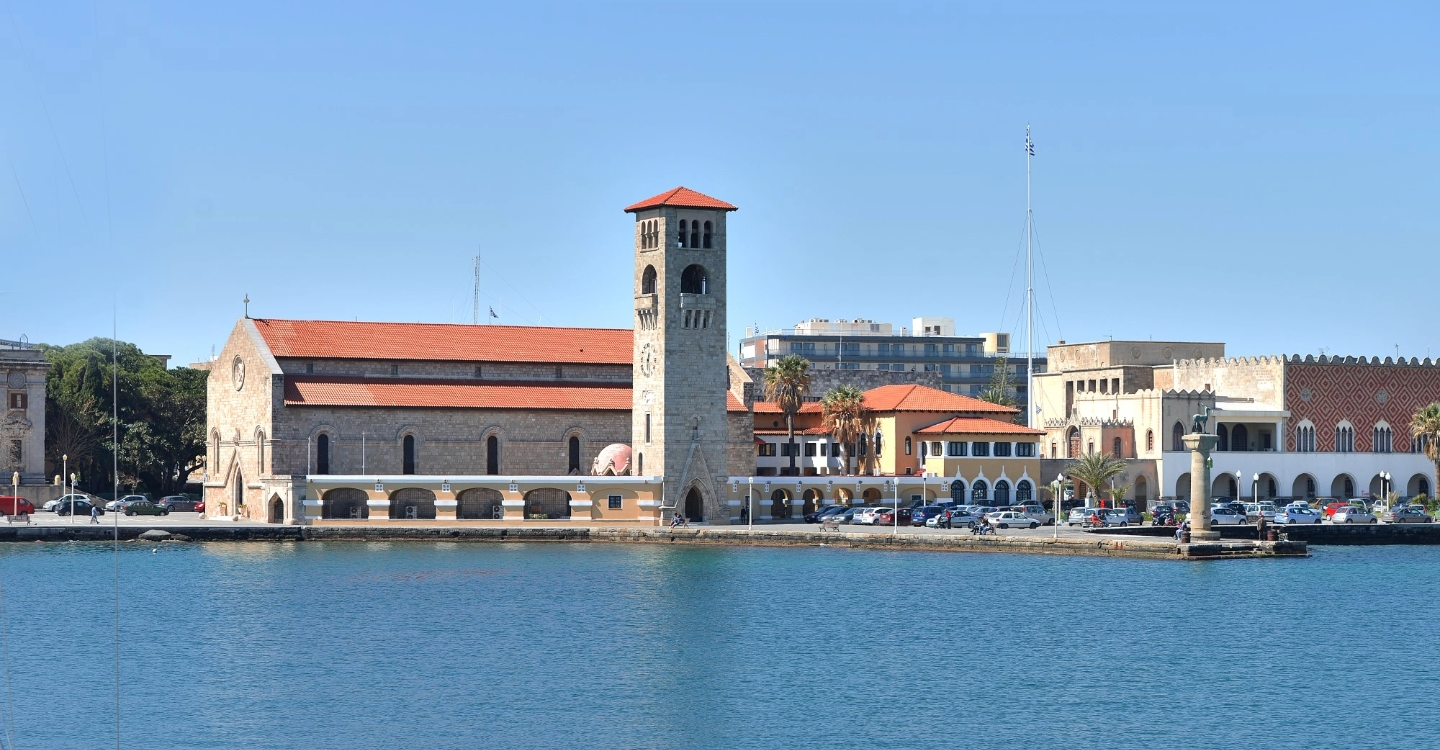The history of the Cathedral
The building complex of the Cathedral of the Annunciation of the Virgin in Eleftherias Square in Rhodes is a prominent monument of Italian neoeclecticism and a modern morphological rendering of the now destroyed Medieval Convent Church of the Order of the Knights of St John, which was located in the western fortified part of Kollakion and was completely destroyed after a gunpowder explosion in 1856.
In 1924, the National Association of Franciscan Missionaries commissioned the Italian architect Florestano di Fausto to design the reconstruction of the Catholic Church of Saint John (San Giovanni) in a different location from that of the original church. Di Fausto relied mainly on the drawings by the explorers Bernard Eugene Antoine Rottiers of 1828 and Eugene Flandin of 1853. Construction began in 1924 and was completed in 1929, while a year later (in 1930) the imposing 26-meter-high bell tower was added, and a little later the triangular atrium, enclosed with a portico, with a concentric roofed structure and a consecration basin in the middle. Moreover, in front of the main entrance of the church, a copy of the monumental medieval fountain Fontana Grande of the city of Viterbo, Italy was added.
The ceremony of handing over the military command of the Dodecanese from the British Brigadier Parker to the Greek Vice-Admiral Ioannidis took place in Eleftherias Square, located next to the church, on March 31, 1947, and on March 7, 1948, the integration of the Dodecanese into Greece was announced. The Roman Catholic church of Agios Ioannis (San Giovanni) became the property of the Greek state and was converted into an orthodox church dedicated to the Annunciation of the Virgin. On March 25, 1948, the Cathedral of the Annunciation was inaugurated by the Archbishop of Rhodes, Timotheos. The church remained unchanged on the outside, while the interior was adapted to meet the needs of the Orthodox worship to which it was dedicated.

The marble iconostasis of the church is the work of the Skaris brothers from Piraeus. The four despotic (central iconostasis) icons, as well as the wall painting, were carried out between 1951 and 1961 by Fotis Kontoglou, his student, Ioannis Terzis, and their apprentice, Pantelis Odambasis.
The 1st Pan-Orthodox Conference took place inside the church from September 24 to October 1, 1961. A memento of that conference are the banners – symbols of the patriarchs who took part in it.
The collections of the church include important archival material and objects that are intertwined with its history, the history of the city and the Metropolis of Rhodes.
The church was and remains part of the living history (oral history) of the island and the Dodecanese. The most important part of this history took place in the church or in front of it. The ceremony of the integration of the Dodecanese into Greece, the enthronement of the Metropolitans of Rhodes, the celebrations and the visits of historical figures, heads of state, patriarchs, etc., are some of the events related to the tangible and intangible cultural objects that were documented, digitized and are made available to the general public.




